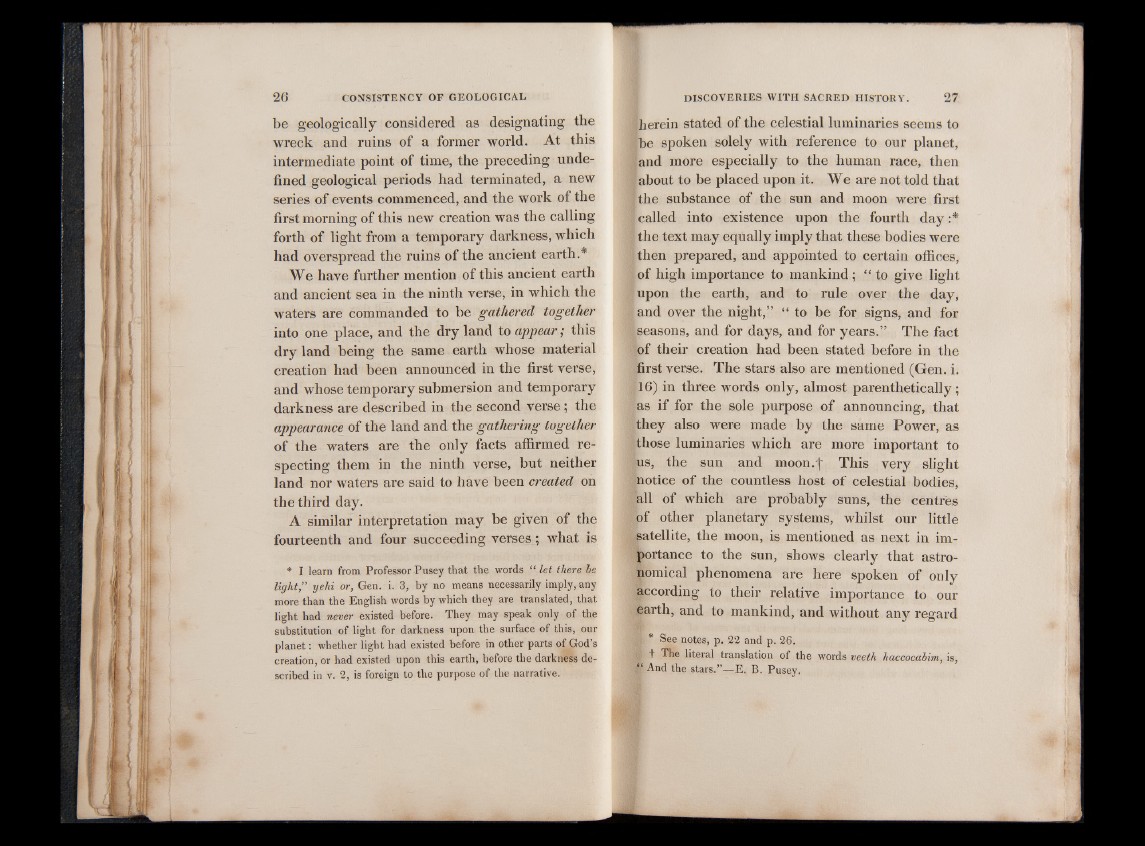
be geologically considered as designating the
wreck and ruins of a former world. At this
intermediate point of time, the preceding undefined
geological periods had terminated, a new
series of events commenced, and the work of the
first morning of this new creation was the calling
forth of light from a temporary darkness, which
had overspread the ruins of the ancient earth.*
We have further mention of this ancient earth
and ancient sea in the ninth verse, in which the
waters are commanded to be gathered together
into one place, and the dry land to appear; this
dry land being the same earth whose material
creation had been announced in the first verse,
and whose temporary submersion and temporary
darkness are described in the second verse; the
appearance of the land and the gathering together
of the waters are the only facts affirmed respecting
them in the ninth verse, but neither
land nor waters are said to have been created on
the third day.
A similar interpretation may be given of the
fourteenth and four succeeding verses; what is
* I learn from Professor Pusey that the words “ let there be
light,” yehi or, Gen. i. 3, by no means necessarily imply, any
more than the English words by which they are translated, that
light had never existed before. They may speak only of the
substitution of light for darkness upon the surface of this, our
planet: whether light had existed before in other parts of God’s
creation, or had existed upon this earth, before the darkness described
in v. 2, is foreign to the purpose of the narrative.
herein stated of the celestial luminaries seems to
fbe spoken solely with reference to our planet,
land more especially to the human race, then
[about to be placed upon it. We are not told that
the substance of the sun and moon were first
called into existence upon the fourth day:*
; the text may equally imply that these bodies were
then prepared, and appointed to certain offices,
of high importance to mankind ; “ to give light
upon the earth, and to rule over the day,
and over the night,” “ to be for signs, and for
(Seasons, and for days, and for years.” The fact
of their creation had been stated before in the
first verse. The stars also are mentioned (Gen. i.
16) in three words only, almost parenthetically;
as if for the sole purpose of announcing, that
they also were made by the same Power, as
jthose luminaries which are more important to
us, the sun and moon.f This very slight
notice of the countless host of celestial bodies,
all of which are probably suns, the centres
bf other planetary systems, whilst our little
satellite, the moon, is mentioned as next in importance
to the sun, shows clearly that astronomical
phenomena are here spoken of only
according to their relative importance to our
earth, and to mankind, and without any regard
| | * See notes, p. 22 and p. 26.
t The literal translation of the words veeth haccocabim, is,
§ And the stars.”—E. B. Pusey.